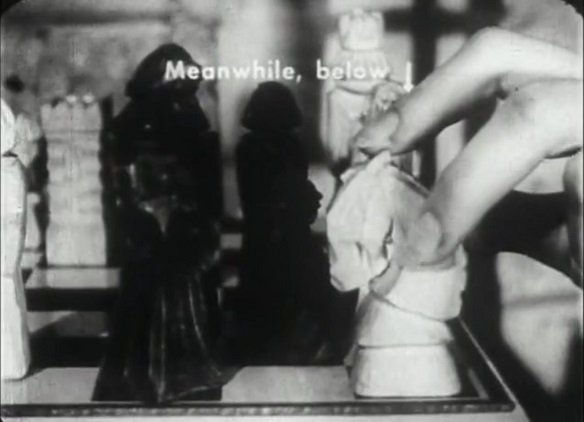
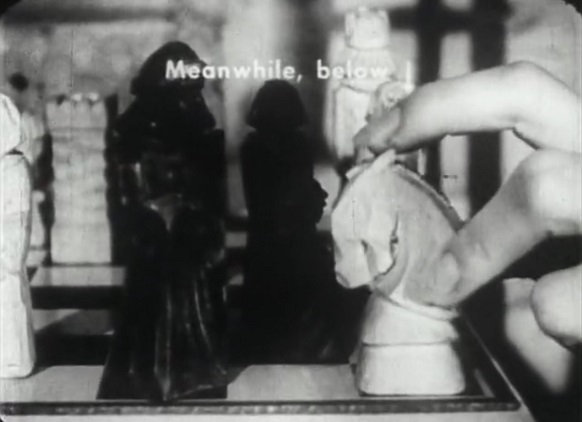
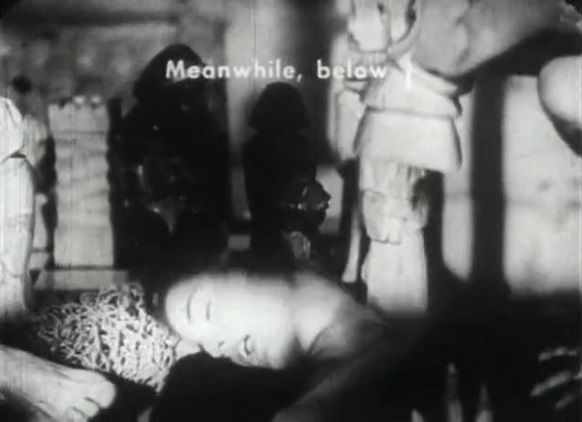
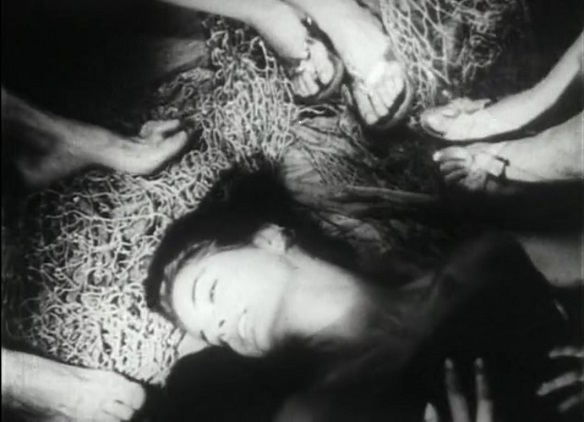
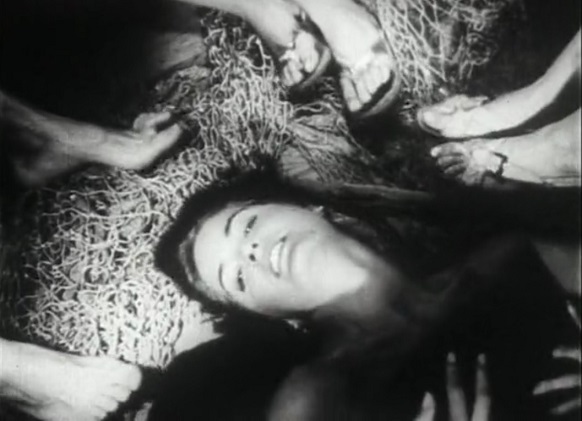
Updated: Saturday, April 27, 2019 11:20 AM CDT
Post Comment | Permalink | Share This Post
 Hello and welcome to the unofficial Brian De Palma website. Here is the latest news: |
|---|
E-mail
Geoffsongs@aol.com
-------------
Recent Headlines
a la Mod:
Listen to
Donaggio's full score
for Domino online
De Palma/Lehman
rapport at work
in Snakes
De Palma/Lehman
next novel is Terry
De Palma developing
Catch And Kill,
"a horror movie
based on real things
that have happened
in the news"
Supercut video
of De Palma's films
edited by Carl Rodrigue
Washington Post
review of Keesey book
-------------
Exclusive Passion
Interviews:
Brian De Palma
Karoline Herfurth
Leila Rozario
------------
------------
| « | April 2019 | » | ||||
| S | M | T | W | T | F | S |
| 1 | 2 | 3 | 4 | 5 | 6 | |
| 7 | 8 | 9 | 10 | 11 | 12 | 13 |
| 14 | 15 | 16 | 17 | 18 | 19 | 20 |
| 21 | 22 | 23 | 24 | 25 | 26 | 27 |
| 28 | 29 | 30 | ||||
De Palma interviewed
in Paris 2002
De Palma discusses
The Black Dahlia 2006

Enthusiasms...
Alfred Hitchcock
The Master Of Suspense
Sergio Leone
and the Infield
Fly Rule
The Filmmaker Who
Came In From The Cold
Jim Emerson on
Greetings & Hi, Mom!
Scarface: Make Way
For The Bad Guy
Deborah Shelton
Official Web Site
Welcome to the
Offices of Death Records






Brian De Palma is a friend of mine and was a mentor to me on the film. He said, “You know Jennifer this is a casting nightmare. How are you going to audition two versions of everybody?” But, we had really great casting help with casting director Matthew Maisto. We also had Oren Moverman as a producer. So, we did the best we could in every circumstance.
DescriptionP.A.X.A. was approached by HBO's The Tale to support its grass roots efforts to leverage the film and raise awareness of child sex abuse. After watching the movie, our organization wants to share Director Jennifer Fox’s true life story to as many parents as possible. It shows how a pedophile uses emotional manipulation and grooming to lead his victim into thinking that she’s making choices to be in a sexual relationship with him. Be forewarned: there are explicit scenes of sex with a minor (filmed with an adult body double) that will elicit disgust. But a greater good is served: this movie is impactful because it portrays the perpetrator—not as a monster—but as a nice guy who earnestly wants a sexual relationship with a child. This is the most insidious and disturbing part of the film: you will never think of sexual predators the same way ever again.
Why Attend this Screening:
P.A.X.A. invites parents to attend the screening of HBO's the Tale as a way to gain better an understanding about:
The type of settings where a child may find himself/herself vulnerable and a target for sexual predators.
Tactics predators use to manipulate a child into sexual abuse.
Tactics predators use to groom the child's parents.Note: This film is intended for an adult audience only. If you are survivor or survivor parent, this film may trigger PTSD.
The Tale's Writer/Director, Jennifer Fox, will participate in this screening
Program Agenda:
10:00am – 10:15am: Introduction to P.A.X.A. and HBO's the Tale
10:15am - 11:15am: Movie showing (first 60 minutes of the movie)
11:15am – 11:30am: Break
11:30am - 12:20pm: Movie showing (remaining 52 minutes of the movie)
12:20pm - 1:00pm: Panel Discussion + Open Q&A with Audience and Jennifer Fox
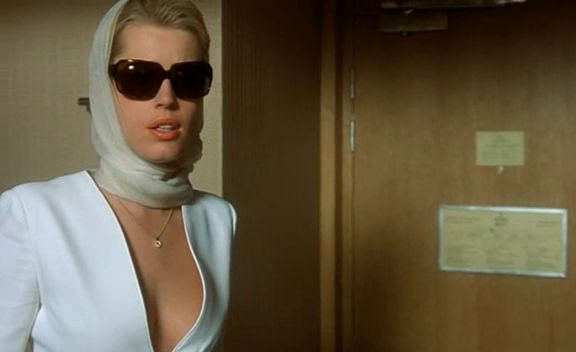 Wednesday night (April 24th), the Brooklyn Academy of Music will screen Brian De Palma's Femme Fatale at 7pm, as part of its Curator's Choice, Screen Epiphanies series. Before the screening, film critic K. Austin Collins will be on stage with BAM's Ashley Clark to discuss how Femme Fatale inspired Collins' love of cinema.
Wednesday night (April 24th), the Brooklyn Academy of Music will screen Brian De Palma's Femme Fatale at 7pm, as part of its Curator's Choice, Screen Epiphanies series. Before the screening, film critic K. Austin Collins will be on stage with BAM's Ashley Clark to discuss how Femme Fatale inspired Collins' love of cinema.
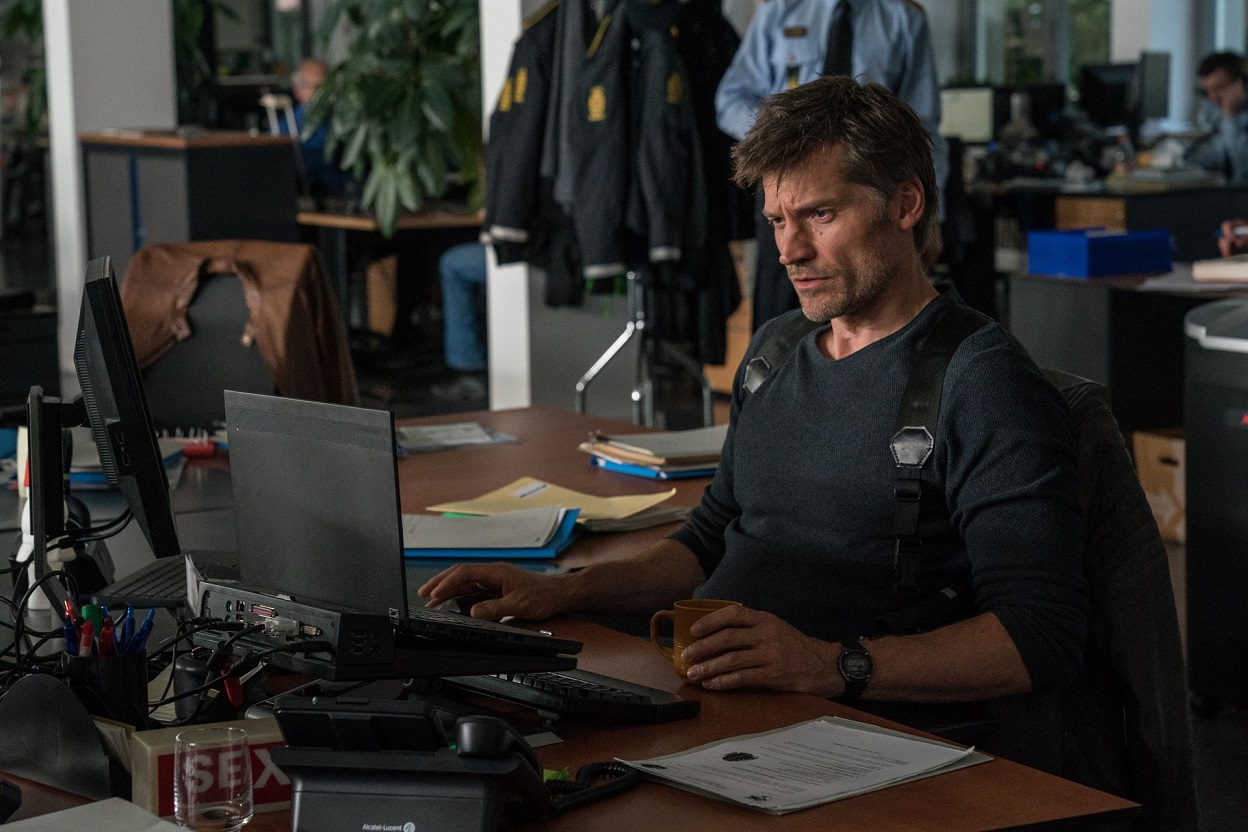
"Somehow we managed to make a movie out of this completely chaotic production situation, and hopefully you'll be seeing it in your local cinemas sometime in the future." -Brian De Palma
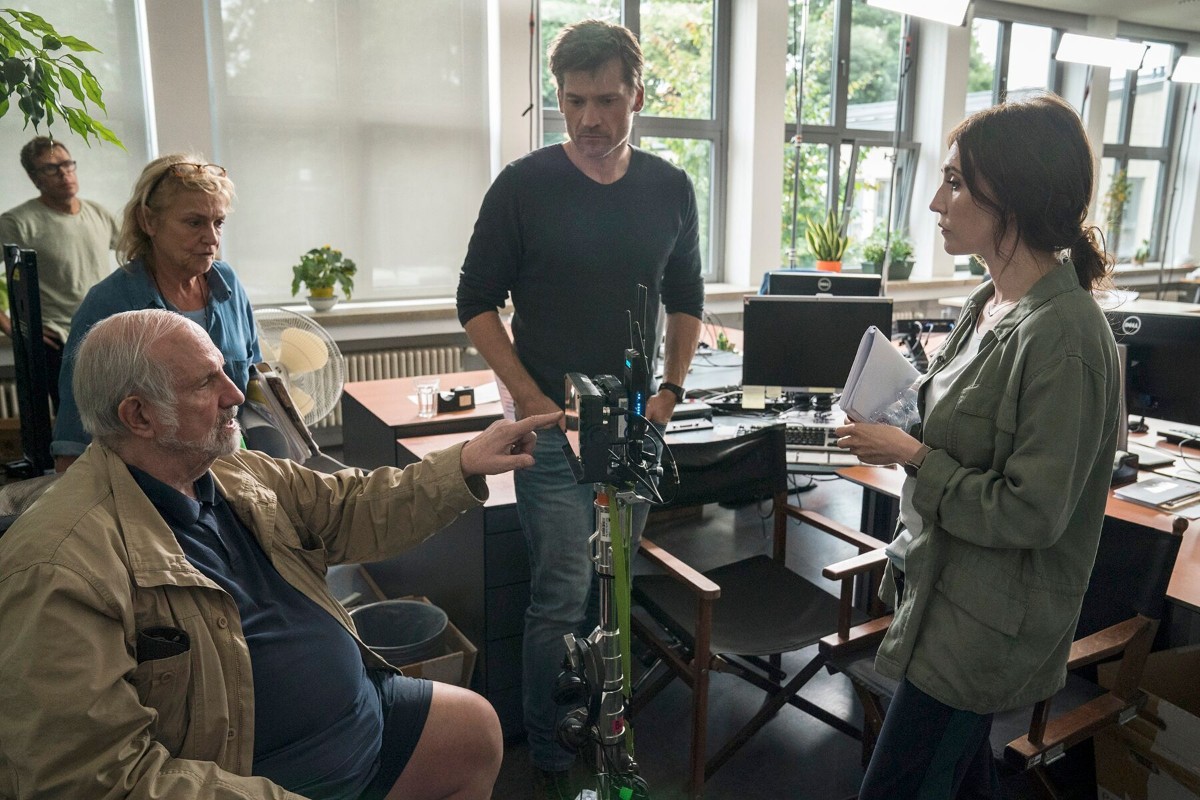
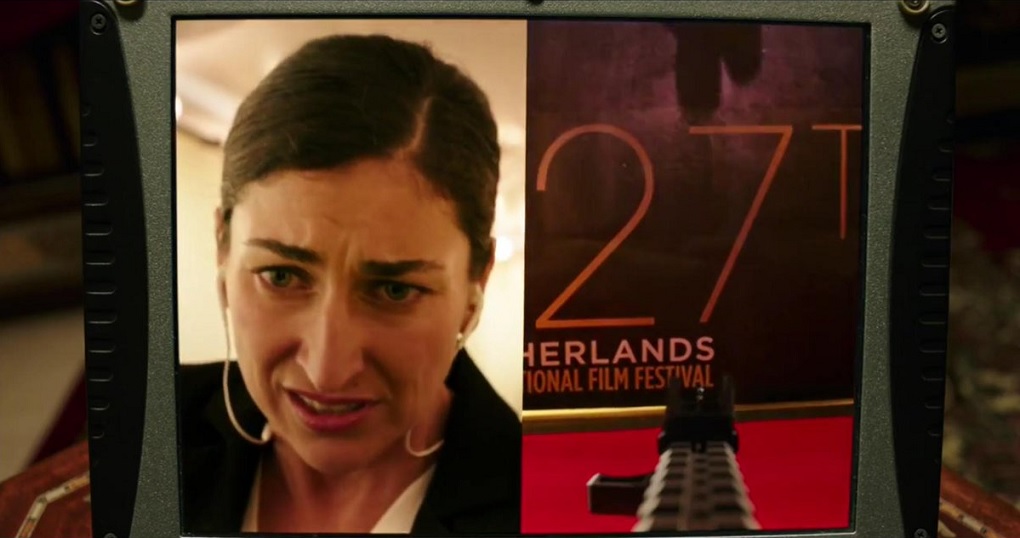
DOMINO: A refraction of the thematic concerns of REDACTED filtered through the antiseptic, high-def DV sheen of PASSION. An exploration of modern warfare as a clash between panoptic/synoptic surveillance, based on a dichotomy between digital image monitoring devices as tools of oppression and tools of emancipation. Toxic notions of American exceptionalism pitted against idealistic ambitions towards multicultural cooperation.
****1/2 starsThis will show the world the destruction of the infidels."
"This will show the world your sacrifice.""We're Americans. We read your emails."
Some of the most impressive shit Brian De Palma has ever shot. A continuation of the ideas and themes seeded in Redacted by way of Passion's aesthetic adventures. Definitely not the film it was originally supposed to be, but in a weird way the fragmented quality only makes it more intriguing. I pity the poor bastards who tried to market this as a straight action thriller.
****1/2 starsCLEARLY compromised yet despite this still manages to be one of De Palma's best. Almost feel's like if an amazing director tried to make a thriller in the style of The Room, but as crazy as that sounds it fucking works. This film is pure camp combined with De Palma's masterful filmmaking. If we ever get his cut, it could truly be a perfect film.
PS: Features the greatest use of split screen in cinema.
Truly preposterous, bizarre movie. Plays as a satire/parody of political thrillers like Homeland almost because (in spite of?) the clear studio-mandated editing. Although the film was obviously compromised, the wacky plot developments reveal De Palma wildly indulging in his vintage trademarks: insane split screen POV massacre via laptop screen, a third act showdown almost told entirely in slow-motion, smoldering split diopter closeups, roaming overhead crane shots.
No star rating for this one because it’s not a finished movie. It’s agonizing to watch at times. There’s a fun rooftop chase that was pretty clearly temp tracked to the “Kidnapped” cue from NORTH BY NORTHWEST (which is amusing because the sequence is a riff on VERTIGO), but it plays like a walk-through. The bullfight finale is brilliantly conceived, but it feels like the money shots are missing. De Palma was forced to rush through principal photography due to shady behavior from his financiers, and isn’t doing press. I’m surprised he kept his name it. But if you’re a fan, it’s an interesting companion piece to REDACTED, as well as a politically radical inversion of MISSION: IMPOSSIBLE. What could’ve been...
**** starsWhew. Clearly botched but still manages to be one of the most formally creative and impressive action/thrillers of the past few years. The final neon-drenched set-piece (mostly in slow motion) is truly something to behold.
****1/2 stars90s De Palma with the political intrigue of Redacted. I’m glad this finally came out, this film is fantastic.
**** starsholy mackerel
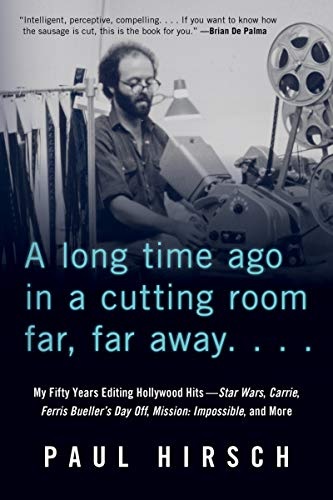 ProVideo Coalition posted an interview the other day with Paul Hirsch, who has edited many of Brian De Palma's films, as well as Star Wars, Ray, and many, many others. Hirsch has a book coming out November 5th, titled A Long Time Ago In A Cutting Room Far Far Away, and he tells Steve Hullfish (who writes the site's "Art Of The Cut" column) that some of the stories he shares in this interview are in the book. "It’s my experiences in the business," Hirsch tells Hullfish, "not a how-to book. The story of my career and how I got started and how things led to where they did. And the pictures I worked on and the fabulously interesting people that I collaborated with and the set of problems that we had to solve and how we did, like swapping out the wide shot of the house in Obsession with the shot of Cliff sleeping which allowed it to get sold. My book is very personal. It’s my experience over my 50 years of editing."
ProVideo Coalition posted an interview the other day with Paul Hirsch, who has edited many of Brian De Palma's films, as well as Star Wars, Ray, and many, many others. Hirsch has a book coming out November 5th, titled A Long Time Ago In A Cutting Room Far Far Away, and he tells Steve Hullfish (who writes the site's "Art Of The Cut" column) that some of the stories he shares in this interview are in the book. "It’s my experiences in the business," Hirsch tells Hullfish, "not a how-to book. The story of my career and how I got started and how things led to where they did. And the pictures I worked on and the fabulously interesting people that I collaborated with and the set of problems that we had to solve and how we did, like swapping out the wide shot of the house in Obsession with the shot of Cliff sleeping which allowed it to get sold. My book is very personal. It’s my experience over my 50 years of editing."HULLFISH: I watched Obsession — which you had suggested — a lovely movie and then today I watched Mission: Impossible. Same editor, same director – but two very different films.HIRSCH: Well, they were made 20 years apart, and completely different genres.
HULLFISH: Looking at the year of release, was Mission: Impossible your first on Avid or had you done one or two before that?
HIRSCH: Mission: Impossible was the first picture I did using computers. The early 90s was when the big changeover happened, and it was on Lightworks, not Avid.
HULLFISH: Watching dailies is really interesting to me, and since you obviously have come from a place of watching dailies on film could you talk to me a little bit about the difference between watching dailies from the film days to the NLE days?
HIRSCH: It used to be that dailies were shown in a theater every day. The DP would be there, the director, a producer usually, and sometimes — depending on the scene — you might have the costume people and makeup people come to see what their work looked like on screen.
There’s something about the meeting of all those minds in one place in one room at one time that helps solve problems. You can discuss things. “What are we doing tomorrow about this?” and so forth. Now dailies are distributed online. They’re streaming and everybody looks at it individually and at their own pace and so I guess it’s more convenient for everyone else. It’s a phenomenon happening all over, people working in silos.
I feel fortunate to have had my career at a point in the development of the business that was more respectful of the contributions that the various crafts people were bringing to the process. Happiness for me is always proportional to the amount of discretion and autonomy that I have.
HULLFISH: One of the things that I was thinking about when I was watching Obsession was how little coverage there must have been on some of those scenes and the number of takes. The pace is very deliberate. The shots are beautiful. Looking at dailies in that era was a very different thing — like you said — just because of the amount of dailies.
HIRSCH: It was expensive to develop and print. So there was a limit as to how many takes Brian (director, Brian De Palma) was allowed. He could make an exception, but usually not. And he doesn’t cover. He has a very particular idea of the action and the choreography of the camera and how they relate and the blocking the camera and it doesn’t allow for coverage. It’s a shot designed to be in a particular place. I found, working with Brian, I could look at his dailies and know what he had in mind, just from the design of the dailies. And he liked working with me because when he looked at what I’d edited, he’d say, “Yeah that’s what I wanted.” So I wasn’t micromanaged but I still was able to deliver what he wanted.
HULLFISH: And that’s because the intent — when you’re watching the dailies — there were shots that when you watched them on the screen — at least as an editor — I thought that shot at that moment was probably the only thing that you ever considered because Brian shot them in a very specific way and the camera movement revealed things and you probably thought, “Why would I ever break that up with coverage?”
HIRSCH: One of the editor’s tricks is to use each angle only once. That way the impression is created that it was intended for just that moment, even if it was a choice made in the editing rooom. When Tom Cruise breaks into the CIA in Mission: Impossible, the action is taking place in the vault as well as outside the vault. So the daiies are less specific. Finding the right continuity is the tricky bit.
HULLFISH: Right. And I was going to ask you about those. Those are two scenes with a ton of tension to them: breaking into the vault with a lot of cuts to close ups of drops of sweat and knives and rats and all these things that are happening and then also the high-speed rail scene.
HIRSCH: The vault scene has no music.
HULLFISH: I didn’t realize that!
HIRSCH: Breaking into the CIA is absolutely silent and Brian wanted to take EVERYTHING out. Gary Rydstrom — who’s the sound editor — had put in a little squeak for the wheel that the rope goes though as Ethan descends into the vault and Brian said, “No, no! Get rid of it.” They wouldn’t have a squeaky wheel. They would have taken care of that. So there are hardly any sound effects and absolutely no music.
Absence of music creates tension. It’s something I learned from Bernard Herrmann when I was 26 years old and I had cut a sequence in Sisters. Bill Finley plays the doctor trying to get Margot Kidder to relive a traumatic memory and he’s holding up a bloody knife to her to try to shock her into remembering. We’re on his face; we’re on his hand with a bloody knife; we’re on her face; and then we’re also on her hand as she reaches down to take a scalpel off a table nearby. So I was intercutting these various shots and it was getting faster and faster until the moment when she slashes at him with the scalpel. When [Herrmann] saw this scene and we were talking about when to add the music cue, he’d say, “Not yet. Not yet. Not yet.” And then when she slashed him is when he introduced the music. I had imagined that he would be building tension in the music up to the point of the slash. So what I thought would be the musical climax was where he started, not ended.
So I went back and I looked at North by Northwest and saw the same thing with the crop dusting scene. That whole scene — If you say to people, “Do you remember the music in that scene?” They’ll say, “Oh yeah. It was fantastic!” Well, there isn’t any. No music at all. You hear the cropduster as it comes by and Cary Grant dives into the dust and it comes after him again and then this tanker truck comes out on the highway and he goes to the highway to stop it and the plane crashes into the truck and the whole thing explodes. That’s where the music comes in.
HULLFISH: Interesting.
HIRSCH: So all that tension that you were feeling was a function of no music. So it’s a very important lesson to learn that silence is an effect also.
HULLFISH: [Herrmann] did the score for Obsession as well.
HIRSCH: Yes, yes. I think a lot of the power of the ending — I saw it recently after many, many years. I don’t watch my films because when you get to the end of a film you’d rather put your eyes out than see it one more time. When you wait 40 years to see it again, it looks different. It played a little slower than I’d remembered. I knew it was slow, but I’m looking at through today’s eyes and that’s different from back then. But what really worked for me was the ending. Really emotionally powerful. And I think a lot of that comes from the music.
HULLFISH: Did you temp music in at all?
HIRSCH: [Herrmann] wouldn’t have it. On Sisters, we temped with Marnie and Psycho and some other things. He heard one note and he jumped out of his chair and screamed at us to turn it off. That was quite something. He didn’t want any music. Knowing that, we didn’t put anything in. So we were watching the picture dry and then Hermann started to chuckle. Brian says, “What’s so funny, Benny?” It wasn’t a funny scene. “Why are you laughing?” [Herrmann] says, “I’m just thinking that I can hear all the music now and you have to wait six weeks to hear it.”
Obsession was interesting from an editorial standpoint because when we finished the picture and the producer shopped it around — it was an independent production — he couldn’t get anybody to pick it up. He showed it to all the studios and they all turned it down.
There was a wedding sequence in the original cut of the film. (SPOILER ALERT). It turns out that Cliff and Genevieve are father and daughter, so the studios went, “Oh my God! We can’t put this out.” Incest is a taboo they would not violate.
So I had the idea of turning the wedding scene into a dream sequence. We had a shot of Cliff asleep. So instead of using the establishing shot of the house where we wedding takes place, we took that out and replaced it with the shot of Cliff sleeping and did a ripple dissolve and now it’s a dream. He’s dreaming of his obsession to marry this woman as opposed to actually recording a factual event. So by substituting one shot, the producer was able to take it back and Columbia picked it up for distribution.
HULLFISH: That is a fascinating story.
HIRSCH: Changing one shot changed the whole reaction to the film.
HULLFISH: The pace of Obsession was very deliberate, but there were two places where it definitely picked up: one was a fast sequence in the back-and-forth between Bujold’s eyes and the eyes of a painting she’s looking at. And then the other one was, of course, the climax at the airport.
HIRSCH: Both of the sequences are based on intercutting. When Brian shot Genevieve creeping around the house, she’s trying to understand her childhood. He shot a long slow zoom into her eyes. And he did a long slow zoom into the portrait of her mother and I thought, well I can’t just play them back to back. So I intercut them. I thought it worked out rather well.
HULLFISH: Yes. I loved it.
HIRSCH: I have to point out to you, Steve, that this was back in the day when you couldn’t scroll a shot. So you had to cut it so that it didn’t feel like you were backing up or jumping ahead. It had to feel like one continuous motion even though you’re going back and forth between the two shots. I wanted it to feel like one long zoom — the two would comprise one long zoom. It would have been a lot easier on an Avid because if you cut short or too deep, you could roll the shot or just trim it.
On film, we had to be much more certain of where to make the cut. You were making a decision that COULD be unmade but it was not as simple as working digitally. Because of that, a premium was placed on editors who could cut in the right place the first time and not have to fiddle around. Actually, in the old studio days, pictures were cut by the studio — not by the director. The director would finish shooting on a Friday and Monday he’d be off shooting another film. The film would go to the editing department, which was usually headed by someone like Margaret Booth or Barbara McLean. Some of these department heads had enormous power. She would assign the pictures to various editors and in those days all the splices were made by hot splice, which meant that you had to cut in the middle of the frame in order to make the edit.
HULLFISH: And you would not get that frame back.
HIRSCH: Right. So if you wanted to extend a shot because you had cut it too short, your assistant would need to put a frame of black leader to make up for the frame you had dropped, to keep the length consistent with the sound and with the picture negative. The studio would count the number of black frames in your work print, and if you had too many black frames, that wasn’t good!
I mean, obviously it’s better to have a perfect film rather than a perfect work print, but I used to pride myself on not having too many unnecessary splices.
HULLFISH: Is there anything else that you bring with you from your film background to non-linear in that you are better able to see the scene in the dailies or see the structure of a scene without putting it together?
HIRSCH: I think I always had an ability to do that. It’s hard for me to separate 50 years of experience from having worked in film. I don’t know how much that played into it or not.
My first picture came out in 1970. My first computer film was 1995 so my career has been 25 years on film and almost 25 years on the computer.
HULLFISH: There’s a great long pan at the memorial tombstone at Pontchartrain Memorial Park in Obsession.
HIRSCH: That’s to show passage of time. It starts out with him building this park — you see the bulldozer moving earth and lowering the monument into place and the camera does a 360 and there’s (supposed to be) an invisible wipe so when the camera comes back around it’s 20 years later and the park is fully landscaped. It was intended to be a seamless join and look like one shot.
HULLFISH: I was thinking of it as needing that time just for the audience to absorb what’s happened in the scene before it, which is very emotional.
HIRSCH: Yeah. In any story, you need time for things to land. You need time for the audience to get things. A lot of my work now is being called in to help pictures that aren’t working. Often it’s a question of the moments not landing because they go too fast. Sometimes you have to slow down. If the audience is confused, they’ll turn off and they’ll get bored. So even if it’s fast cut, it doesn’t mean that you’re engaging their interest. It’s important to slow down and let the moments land that need to land. Then the audience will be MORE engaged even though the pace is slower.
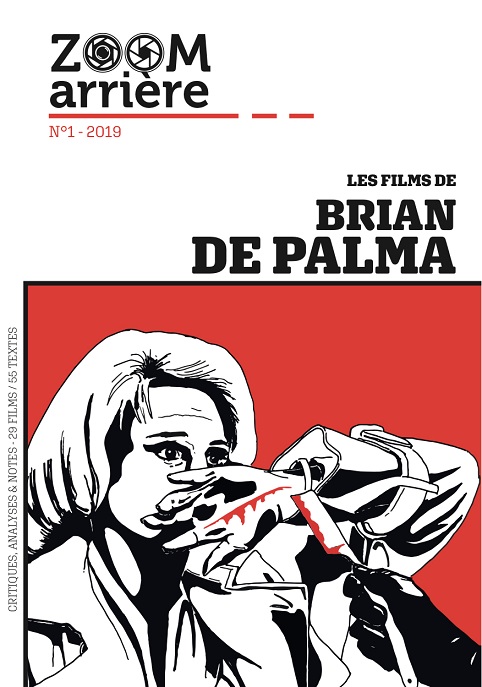 The French-language blog Zoom Arrière has published its first book, Les Films de Brian De Palma. The plan is to create, over time, a collection of similar books on films and filmmakers. "You will find (for a small fee), spread over 138 pages, 55 articles revisiting all of the director's 29 feature films, and more," states a post on the blog. "These articles are written by 13 contributors who have all participated, at one time or another, to the animation of this blog." The price of the book is 5 euros (plus 4 euros for postage), and can be ordered via the blog's online shop.
The French-language blog Zoom Arrière has published its first book, Les Films de Brian De Palma. The plan is to create, over time, a collection of similar books on films and filmmakers. "You will find (for a small fee), spread over 138 pages, 55 articles revisiting all of the director's 29 feature films, and more," states a post on the blog. "These articles are written by 13 contributors who have all participated, at one time or another, to the animation of this blog." The price of the book is 5 euros (plus 4 euros for postage), and can be ordered via the blog's online shop.

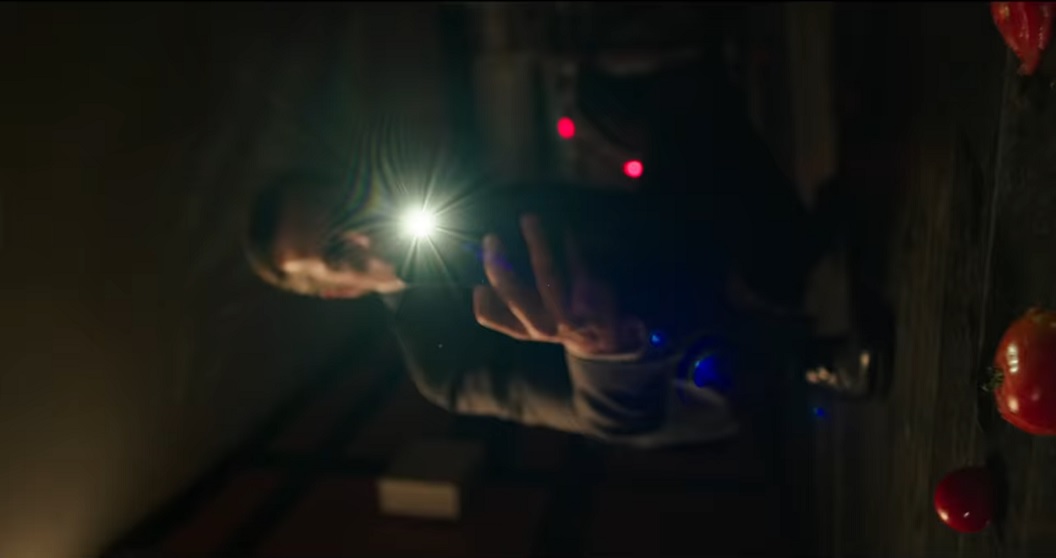
Only Brian De Palma would make a terrorism thriller in which he's most interested in their filmmaking methods. Hugely entertaining in spurts (mostly setpieces and high melodrama), if noticeably compromised elsewhere (transitional scenes and standard crime drama machinations). Another bombastic Pino Donaggio score layering nearly every moment and José Luis Alcaine's cinematography is a peculiar mix of buoyantly colorful and DTV-esque flatness. An I-can't-believe-he-did-this banger of an ending.
Raup's response echoes that of Austin critic Jacob Knight, who posted a two-and-a-half-star review on Letterboxd April 1st. Responding to a comment about "the 148 minute cut," Knight said, "I'm not sure where that runtime is being taken from (maybe the early test screenings that occurred before Berlinale?), but I'm definitely sure I wouldn't want to sit through almost 2.5 hours of this movie (oh, who am I kidding, if they released it, I'd watch it ASAP)." Despite feeling disappointed with Domino overall, Knight says a lot of good things about the movie in his review:
"We're Americans. We read your emails."Ugh. This is a tough one.
De Palma has already stated in interviews that DOMINO was "underfunded", and that he spent most of his 100 days in Denmark/Holland/Spain/Italy waiting around in hotel rooms while the money men kept "lying", and even refused to pay certain crew members at the end of production. Out of those 100, he only shot for 30, and the finished product went back to the producers, who basically bungled it playing any fests and sold it to DTV distributor Saban Films, who are quietly releasing his take on Scandi Noir this May.
To be fair, the finished cut of DOMINO feels like an unfinished film, right down to the chintzy, placeholder-esque title card and lack of any cast or crew listings before we're thrown into a convoluted tale of two Copenhagen cops literally stumbling into a terrorist plot that claims one of their lives, and sends the other (Nikolaj Coster-Waldau) on a quest for revenge. Along this crooked path, we also find a smarmy CIA man (Guy Pearce) who essentially uses the Euro dick's vengeance vector (FEMME FATALE's Eriq Ebouaney!) as a pawn in his own game to take down this terror cell. On paper, this actually sounds like meaty pulp that BDP could really sink his teeth into, concocting set pieces not too far removed from his pop cinema masterpiece, MISSION: IMPOSSIBLE.
In classic De Palma fashion there are two straight up great set pieces. The first is the initial pursuit of Ebouaney's terror suspect across a rooftop, which evokes some serious VERTIGO vibes. The second is the finale at a bullfight being held at Spain's Plaza de Toros, which involves a drone, a suicide bomber dressed as a beer vendor, some binoculars, and Carice van Houten frantically searching for any way to stop an atrocity from happening. These are both wonderful fun, and when coupled with a masterful early set up scene (where we ominously descend upon a gun as two lovers embrace - BDP's own spin on Chekhov, I suppose), remind you that DOMINO could've only been made by one artist with a particular, peculiar set of fascinations. There's also a brilliant thread about how terrorist videos (both manifestos and beheading clips) play on human beings' morbid inclination toward voyeurism, that isn't fully fleshed out, but feels of a piece with the rest of his leering filmography.
Unfortunately, the rest is pretty poorly stitched together, barely running over 80 minutes (which could be a positive, depending on the viewer's own vantage point), with regular Almodovar cinematographer José Luis Alcaine's photography appearing oddly flat. Even Pino Donaggio's score - which is just as a brilliantly bombastic and beautiful as we've come to expect - can't lift the limp drama that occurs between these moments. It's a bummer, but a watchable bummer, making me hope that De Palma's book (ARE SNAKES NECESSARY?) eventually is translated into English (try as I may, I can't read French) and that someone gives him money to make PREDATOR (or anything else), ensuring that DOMINO is not the period at the end of my favorite filmmaker's sentence.